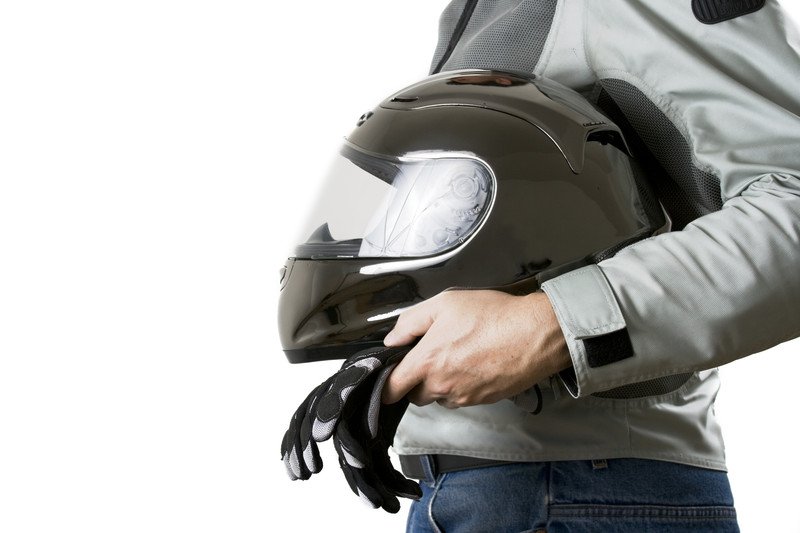For sport or street motorcycle riders, a well-constructed, safety rated motorcycle helmet can have a significant impact on accident survival rates. Forget fads and fashions when choosing a helmet. What matters is the degree of practical protection it offers. There are a number of helmet types to choose from, as sport and street riding can have differing requirements for optimum rider safety.
Serious Protection
For street riding and casual, non-competitive sport riding, a full face helmet may be the safest choice. This helmet style protects your jaw, face, eyes, and head. A quality helmet has an outer shell made of fiberglass with carbon, Kevlar, or plastic with composite fibers. Underneath that shell is a shock-absorbing layer of polystyrene, often in the form of expanded polystyrene foam, called EPS, followed by another layer of absorbent material to help prevent moisture and face screen fogging.
Vents also help prevent face screen fogging, important for maintaining maximum visibility. Face screens help protect riders from being stuck in the face or eyes by insects, dirt and airborne objects or materials. A full-face helmet also adds protection from the elements, is aerodynamic in design to reduce the impact of wind pressure on the neck and shoulders, and serves to reduce the noise of the road.
Open Face and Modular
Even with the safety advantages of a full face helmet, some prefer the open face motorcycle helmet style. They are lighter in weight, have a wider field of unobstructed vision, and make it easier to communicate with fellow riders. Some have a sunshade that can be pulled down, but in general, this style doesn’t offer the eye protection that a full face helmet does. Use this style with goggles for increased safety on the road.
Modular helmets can be viewed as a bridge between the full and open face styles. The jaw protection is movable, sliding up and out of the way when riding circumstances don’t warrant its use. There’s a movable mouthpiece that can be shifted out of the way for speaking. This helmet style does provide eye protection designed with clear visibility in mind.
Competitive Sport Helmets
These helmets have a lot in common with full face helmets in terms of quality of protection, particularly around the jaw area, but they do not have a face and eye cover. Even with the extra venting, a full face screen could fog up during a race. They do, however, have a sun visor. Protective eye gear is a must for sport riding, so pair this helmet with goggles.
Mere Window Dressing
Half helmets may serve for putt-putting around at low speed, but for real riding, these helmets don’t offer much in the way of protection. They cover just the upper portion of the skull. The style may have that old-school cool look, but it might not even stay on during an accident, depriving a rider of its very limited protection.
Look for Safety Ratings
Do your research before buying any helmet. Remember, a DOT or ECE mark only means that the helmet meets the minimum safety standards. The SNELL label is a better choice for safety, as their standards are more stringent. Fit matters when it comes to motorcycle helmet safety, so take your time and choose well.
Whether you’re a first time owner or a seasoned veteran, Southeast Financial can help with your motorcycle financing and insurance needs. Contact us today to see how we can help!


